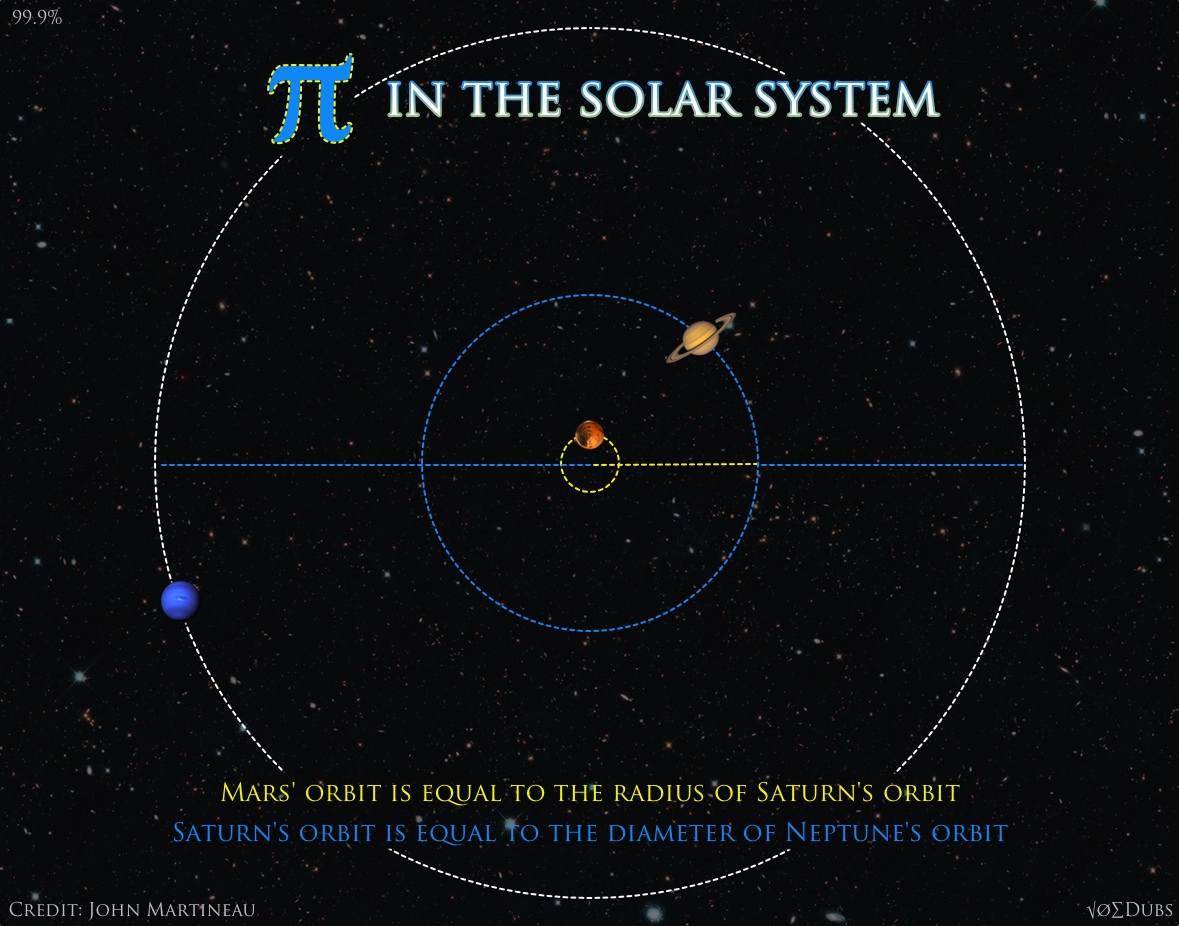Pi in the Solar System

There are an awfully lot of ‘coincidences’ in our solar system to say that it is all just a product of time and chance. Materialist and reductionist theories and their slew of primordial soup doesn’t quite suffice when one ponders the magnificence of all life. Pi is the relationship between a circle’s circumference to its diameter. It comes out to 3.14159.. Why wouldn’t the creator or the architect of the universe make it a little easier on us and just made it 3, or 4? Why does it have to be a transcendental number that goes on and on? The fact that π has no pattern and the digits continue to infinity probably drove early philosophers and mathematicians madd. This irrationality is echoed in the cells of our body and the planets in our solar system. Concurring with the Hermetic axiom, As above so below. There…


